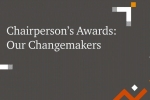Download the report
Last year, the Ministry for Human Resource Development (MHRD) released the Draft National Education Policy 2019 for public consultation up to 30 June 2019.1 It envisions an India-centred education system that contributes directly to the sustainable transformation of India into an equitable and vibrant knowledge society by providing high quality education to all.
The policy covers the entire education sector from pre-school to higher education and is guided by the goals of access, equity, quality, affordability and accountability.
It also advocates the adoption and integration of technology into all facets of the sector – teacher training, learning, evaluation and administration.
Proposed regulatory and accreditation structure of schools
- Functions of policymaking, regulation and operations and academic standards are to be performed by independent bodies to avoid conflict of interest and concentration of power. The proposed institutional framework is given below

Source: Ministry of Human Resource Development
- The State School Regulatory Authority (SSRA) will regulate schools based on parameters such as safety, security, basic infrastructure, number of teachers, grades, probity and process of governance.
- The State Council of Education, Research and Training (SCERT) will develop a School Quality Assessment and Accreditation Framework (SQAAF) for each state in consultation with stakeholders including teachers, school leaders, parents and civil society organisations. The SCERT will develop the curriculum aligned with the National Curriculum Framework (NCF)
- All schools must self-accredit every three years, which is to be validated by the school management committee (SMC) and two peer schools, after due diligence.
- The SSRA to develop a public website wherein all information regarding accreditation of schools, audit, etc., would be uploaded for the public to make informed decisions. Schools are required to disclose the same information on their own websites.
- New private schools to obtain licence from the SSRA on the basis of self-declaration on the requirements and criteria prescribed. Self-declaration to be endorsed by the local authority, the SMC and a chartered accountant.
- Some basic parameters must be considered while granting a licence to a school. They should also maintain accreditation standards on safety and security, essential infrastructure, curriculum, number of students and teachers, subjects and grades, process of governance and public disclosures.
- Schools must remain not-for-profit entities; state governments can prescribe additional standards to discourage the possibility of profiteering.
- Schools must ensure proper teacher deployment and a pupil-teacher ratio of less than 30:1 at each school.
- Public and private schools will be regulated on the same criteria, benchmarks and processes emphasising on public disclosure and transparency.
- Private schools not to use the word ‘public’ in their names, any communication, documentation or declaration. This change will become effective in three years.
- Right to free and compulsory education to be extended for all children between the ages of 3–18 years.
- The National Curriculum Framework 2005 to be revised by the end of 2020.
- The National Council of Education Research and Training (NCERT) to form new assessment norms by 2022.
- The curricular and pedagogical structure will be guided by a 5+3+3+4 design.
- - 5 years of the foundational stage: 3 years of pre-primary school and grades 1 and 2 – flexible, multilevel, activity-based and discovery-based learnings.
- - 3 years of the preparatory (or latter primary) stage: Grades 3, 4 and 5 – build on foundational stage method of learning and gradual incorporation of text books as well as formal classroom learning; every student up to grade 5 to achieve foundational literacy and numeracy.
- - 3 years of the middle (or upper primary) stage: Grades 6, 7 and 8 – introduction of formal subjects with concept-based learning across disciplines; experiential learning within each subject to be encouraged.
- - 4 years of the high (or secondary) stage: Grades 9, 10, 11 and 12 – multidisciplinary study with greater depth, critical thinking, attention to life aspirations, flexibility (elective courses like arts, vocation, physical education, etc.) and student choice.
- Relevant curriculum would be developed for the above-mentioned stages, keeping in mind factors such as current affairs, health, hygiene, diversity and inclusion, ethics, values, gender issues and environment concerns.
Other highlights
- Concept of school complexes to be introduced – a cluster of public schools in a contiguous geography, offering education across all stages; resources such as infrastructure and teachers to be shared for efficient usage and to fill gaps.
- Multiple entry and exit options for students to introduced; integrating dropouts will be an important objective.
- Special education zones (SEZs) to be recognised with large population of underrepresented groups; funding from the Centre and states would be provided.
- There would be flexibility in taking board exams throughout the year and no hard separation between streams.
- Technology-enabled student assessment framework to be put in place for real-time monitoring of student development.
- Schools and schools systems will have full flexibility to choose their curriculum based on NCF and state curriculum framework.
- Initiatives for improving quality of teaching staff:
- - B.Ed. to be restructured as a four-year integrated programme and would become a compulsory minimum qualification for teacher eligibility by 2030.
- - National Professional Standards for Teachers (NPST) to be developed by 2022.
- - Modular approach to continuous professional development, along with merit-based salary structure for teachers to be adopted.
- 24x7 helpline at all school levels for safety of children, especially female students.
- Private schools may be free to set their fees in a reasonable manner, considering the inflation factor. The percentage of fee increase that is permissible based on inflation, etc., will be decided by the SSRA every three years.
















